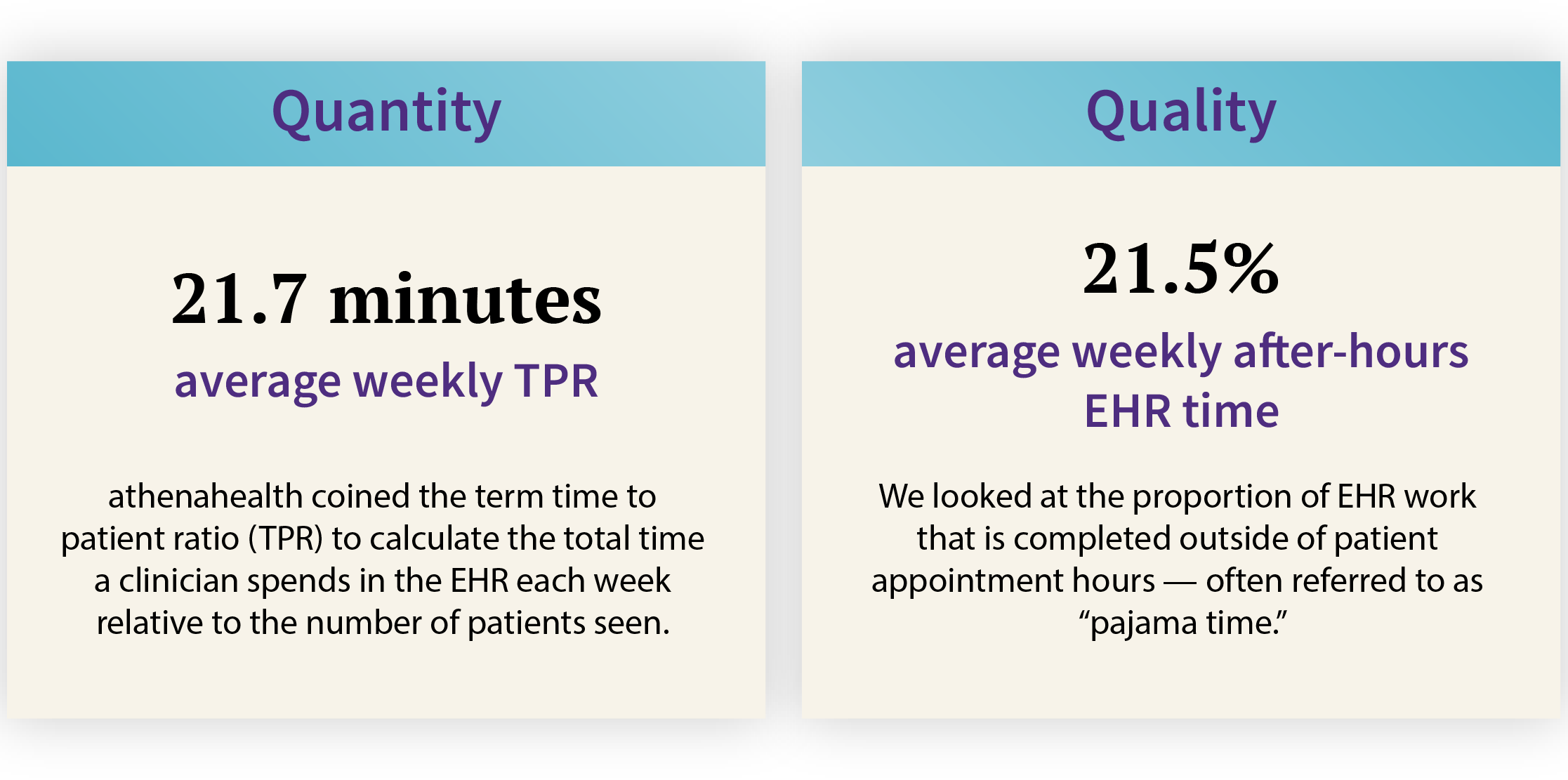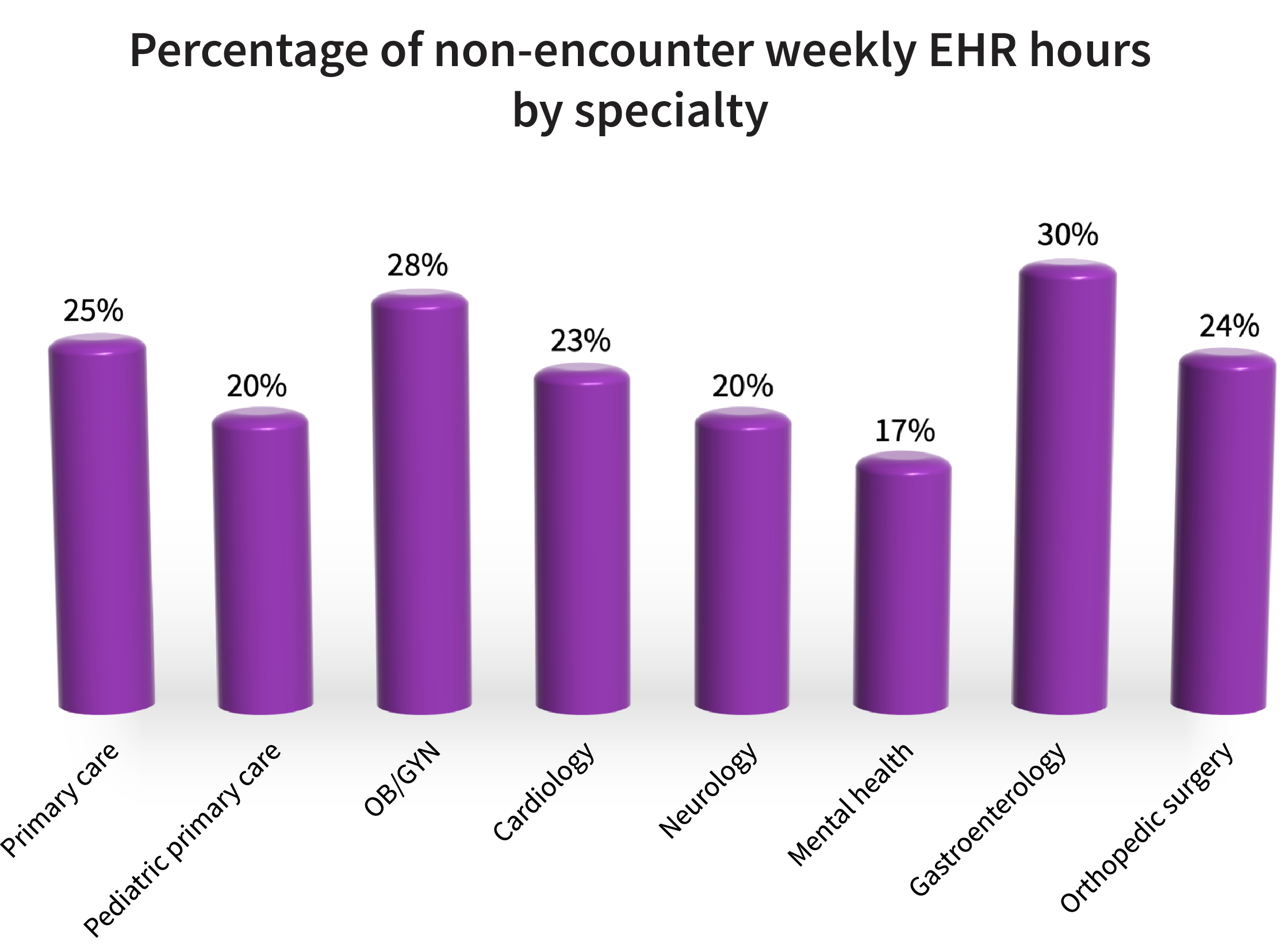The median clinician spends 21.5 hours working in the EHR each week — but what does that time look like? Here’s what the research reveals.

athenahealth conducted research into how clinicians spend their time in EHRs. The research includes analysis of de-identified data from across athenahealth’s network of customers as well as conversations with clinicians. We looked at both the quantity and quality of clinicians’ EHR time.1
You may be spending more time documenting during the encounter than your peers
At a minimum, clinicians typically document History and Physical (H&P) encounter notes and orders during the visit. Many also update the care plan and check off items in the quality tab while they’re with the patient.
All specialties included in the research spend the majority of their EHR time in the patient encounter workflow. But clinicians’ ability to complete encounter documentation during the visit varies, depending on the type of visit and whether physical examination or procedures are required.

Clinicians across specialties benefit from documenting during the encounter
Documenting during the visit can enhance the patient experience, as long as there’s a balance between charting and focusing solely on the patient. Some clinicians view documentation as an opportunity for active listening, to make sure the patient feels heard and understood. They can also read their notes aloud while typing to ensure accuracy or show patients their screen to review useful information.
"It’s helpful to be able to show patients things like how their blood pressure or weight has trended, or explain a cholesterol medication." Diana McDermott, M.D., Access Health Louisiana
It’s a tradeoff between your daily breaks and pajama time
The typical encounter workflow varies by specialty, but certain factors are typically consistent. Most clinicians do some chart prep before the patient arrives, review any lab results that have come in, and tee up any necessary order sets and prescription refills. They also make any notes or orders that administrative personnel such as Medical Assistants need to get the room ready for the encounter.

No matter how much documenting clinicians do in the encounter, they report spending time between visits finishing encounter tasks and completing the various EHR-related to-dos on their plates: reviewing labs, answering portal messages, reading notes from specialists, and so on.
But clinicians know that the more documentation they can squeeze in between patient appointments, the less work they end up needing to take home at the end of the day.
Your specialty influences after-hours and overall EHR time, but so do your personal choices
Clinicians in different specialties vary in both the number of patient visits they schedule each week and the total number of hours they spend in the EHR each week.
Orthopedic surgeons, who often collaborate with advanced practice providers to fill their schedules, see the most patients each week. Yet, they spend less time in the EHR each week than any other specialty.

Clinicians in specialties that perform a lot of procedures also spend the highest proportion of EHR time outside of patient appointment hours. An orthopedic surgeon isn’t going to complete documentation work in the middle of a joint replacement procedure.
Clinicians in procedure-driven specialties often strategically schedule those procedures for blocks in the day, so they can focus on documentation once patients have left the office — a tactic clinicians across specialties may find beneficial.
Research indicates that individual clinicians have more control over when they spend time in the system and less control over how much EHR time is required to complete their responsibilities.

While nearly every clinician spends time in the EHR every day, their experience is anything but uniform. Clinicians in different specialties and organization sizes can learn from their peers, however, about how to make the EHR work better for them.
- Source: athenahealth
- Sample: 8.1 million hours of active EHR work complete by 14,520 clinicians from January-June 2021












